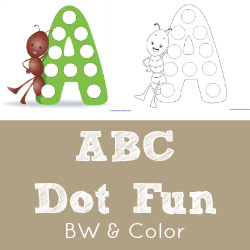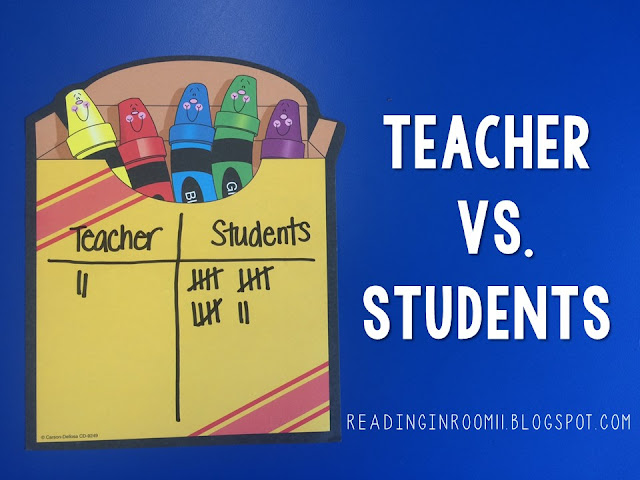As a primary teacher, I am seeing more and more children coming in lacking in fine motor skills. They have difficulty holding and manipulating a pencil or crayons. They don't have the hand strength for something as simple as playing with playdoh. We may have advanced our children more with technology, but at what price? They can operate an Ipad or a smart phone, but they can't roll playdoh into a snake. Really?
So often, when I child has poor fine motor the first suggestion is "just give them a pencil grip." Pencil grips are great, don't get me wrong. They are especially helpful for teaching kids the right grip. But they do not help kids with muscle control. They don't help with small strokes. They don't make kids use their wrist. So how can you fix this? Let me tell you.
Some of the first things that I do in the classroom is work to build my students' hand muscles. You will have to blame my mom (the OT with Hand Therapy Certification) for this but it is so important! Without strengthening their hands, they will not be able to use a pencil or even a crayon well. You often see these kids are the ones that can't make the small strokes with a crayon, that they need in order to stay inside the lines. These children will move their entire arm while coloring and writing. They need to be retrained to only move their wrist. So how do you do that? I am going to give you some ideas today that you can incorporate into the things that you already do so that it is not ONE MORE THING! We want to blend it into our everyday lessons and hopefully just make you, as the teacher, more aware of developing these skills in your primary classroom.
Welcome to Fine Motor 101!
Switch to golf pencils! Little hands need little pencils. Can you imagine writing with one of these bad boys?
No? That's because it is too big for your hand! Your pencils should match the size of your hand. Do you ever wonder why it is easier for a kid to color with a crayon than to write with a pencil? Or why kids will try to sneak around and write in crayon rather than a pencil? It is because it is more comfortable for them. Crayons fit into their hands easier and they are able to control it by moving their wrist. With fat pencils, kids are more likely to move their entire arm to write because it takes all of their hand muscles just to hold the thing. To me, it just makes logical sense, but if you need research to back it up, check out Handwriting Without Tears. They have so much great research on this subject. They also sell little pencils if you want ones with erasers but I have found that golf pencils work just as well and are cheaper!
Some kids do better as belly writers! Babies do not get nearly enough belly time these days and when they come to Kindergarten it is evident! Some kids do better with writing when they can support their core by laying on the floor. It also forces them to keep their elbow still while manipulating their wrist. This is perfect for a kid that likes to move their whole arm while writing. Laying on their belly makes it impossible for them to move their whole arm. They need to be able to support themselves up with that arm, while using their wrist to write! Some of my kids with the best handwriting are belly writers!
Incorporate find motor skills into your learning centers.
I have some great centers that you can add to your literacy (or even math!) that will build fine motor while also building their early literacy skills!
These are some free resources that I found that I love! Click on the image to go to the link and pick up your copy.
(scroll down)


Kids that do not have a lot of muscle strength or coordination will complain about this activity at first. But they will get better at it!
Again, this is another great freebie!
Students can use a q-tip for dotting the letters with paint. Make sure that they don't try to draw lines, because they like to cheat!! haha
I have also used a dotted font to spell out the student's names and sight words for this activity. I use the Hello Zipper font from Hello Literacy. If you make it very large, it works perfectly! You can get it for free too!
Pokey pinning is a great exercise in fine motor. My kids each get a push pin and use it to poke through each dot on the page. We attach our paper to a piece of construction paper. Have students lay on their belly on a carpeted area to do this activity. When it is finished, we hang our construction paper in the window so we can see the sunlight shine through.
You can find a bunch of these on TPT!
Playdoh is great for building hand muscles! So many kids don't know how to play with Playdoh these days! Use playdoh mats to have students create letters, numbers, sight words, and more! Just rolling out the playdogh builds muscle and coordination.
Having students string letter beads onto pipe cleaners builds motor coordination. You can have them create their name, CVC words, sight words, and more!
Combine Letter Beads and Playdoh!
Mix some letter beads into your playdoh tub. Have students work through the playdoh to pick out all of the letter beads. You can have them place the beads on a mat. You can get some free mats that I made by clicking on the pages below.
I hope you have found some great ideas and resources for incorporating fine motor in your classroom!
By the way, I am now at The Primary Treehouse instead of Hanging Out in First!


















































